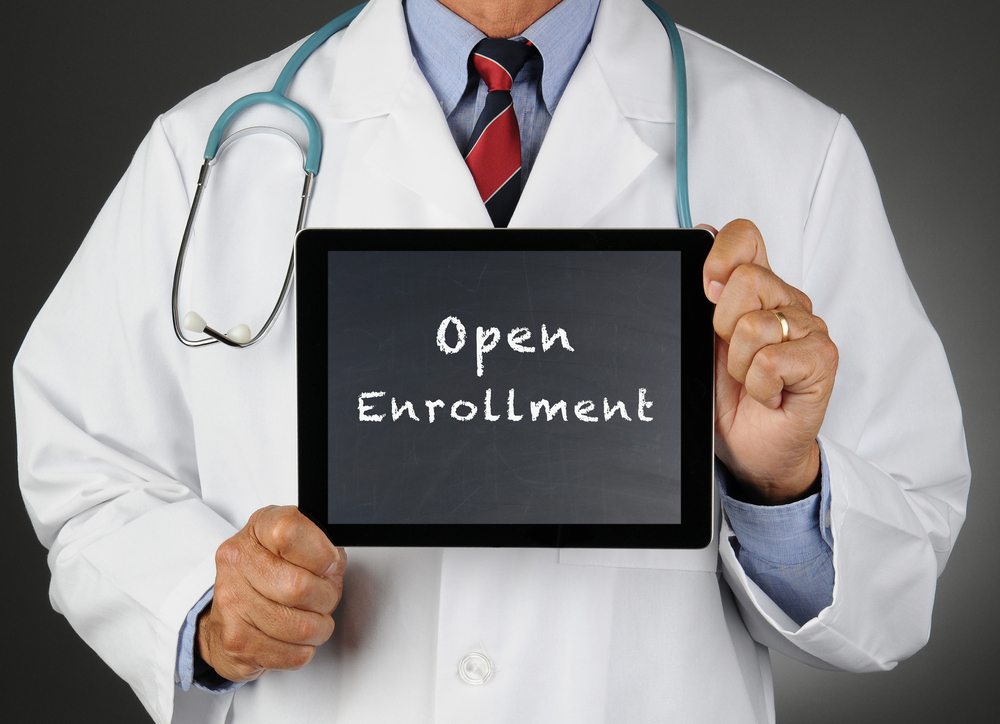This year’s open enrollment season brings a unique opportunity for employers. Employees are more focused on their healthcare needs and benefits as a result of the COVID-19 pandemic and are likely to pay closer attention to open enrollment—and their current coverages—than ever before.

Knowing this, employers now—perhaps more than ever—need to communicate health benefits information so their employees feel confident about the coverage they select for themselves and their families.
Here are three areas where employers can enhance their communication efforts and ensure a successful open enrollment season for employees during these uncertain and stressful times.
1. Content
Under normal conditions, open enrollment—and benefits in general—is confusing for most employees. About one-third (35%) of employees either know nothing about or don’t fully understand their healthcare coverage, according to a survey by Maestro Health.
Furthermore, another recent study indicated that some 70% of those with employer-sponsored health care resort to teaching themselves—or asking friends and family for information—about benefits, putting them at risk for incomplete or inaccurate information.
This year, with an increased focus on health care and income protection benefits, it’s more critical than ever that employees receive timely, accurate information about the options available to them and that clearly describes the implications of their choices—or the choices they don’t make. Driving home the “what’s in it for me” message to employees has never been so important.
To make sure communications are as “digestible” as possible this open enrollment season, employers should focus on what’s new, whether that be a product, an option, or a vendor, as well as topics that have proven confusing for employees in the past.
In addition, employers’ communications should provide materials that specifically address the current state of affairs, including:
- Information on relevant voluntary benefits, such as child care, elder care, critical illness or hospital indemnity insurance, and buy-up life and disability insurance;
- Fact sheets that explain what plans and benefits will best cover COVID-19 costs and any resulting COVID-related issues or long-term aftereffects, such as the onset of diabetes and liver, heart, and lung problems; and
- Notices of any temporary (or permanent) plan changes made as a result of COVID, including longer flexible spending account (FSA) grace periods, increased FSA rollover amounts, and broader coverage of telemedicine, as well as when such changes may expire.
2. Distribution Channels
The broad shift to remote work and increased safety concerns have made the more commonplace communications tools—posters, table tents, and group meetings—largely a thing of the past. And employees no longer have the option of popping into HR when they have a benefits question. Employers must thoughtfully and creatively choose the channels for benefits communication to ensure their virtual workforce receives the information needed leading up to open enrollment.
Not surprisingly, many companies have already started exploring the online route, such as hosting virtual benefits fairs. These fairs offer an engaging forum for employees to explore their benefits, enabling them to take as little or as much time as they want.
Because they’re virtual, these fairs can incorporate a range of elements, from reference materials and forms to live links to benefits educators or plan representatives to videos. And because they’re available 24/7, they’re ideal for employees who work irregular schedules or who want to explore along with their family members. Employers should also leverage digital channels, such as social media (Twitter, Facebook, and LinkedIn), Zoom, text message services, e-mail, and webcasts, to reach employees.
That said, employers should not commit to a virtual-only communication strategy. Not every employee has access to a computer, videoconferencing capabilities, or even the Internet consistently—and those who don’t should not be excluded because of it. For those without digital tools, traditional mailers are still effective. Employers can send out postcard reminders leading up to open enrollment, as well as brochures with important benefits information.
Lastly, remember that employees almost always prefer the “personal touch.” In fact, a whopping three-quarters of respondents to one study stated that one-on-one conversations with benefits educators and experts were the most helpful benefits education tools.
Consider arranging for telephone enrollment support, whereby employees (or a designated family member) can speak privately with a benefits educator about their options. This live support model, which may even include enrolling, helps ensure employees have an opportunity to ask questions about their personal situation and receive consistent, accurate information about their options.
3. Cadence
Open enrollment communication is not a one-and-done exercise. People need to hear messages multiple times before they register. In fact, the cadence of communications should be even more rigorous knowing that employers are targeting a largely remote workforce. This includes sending multiple reminders, knowing that employers can no longer rely on in-person check-ins and that employees won’t hear colleagues discussing open enrollment in the office.
Be sure to communicate:
- Before enrollment, addressing what’s new, even if “what’s new” is just how employees will be getting information about their options and the enrollment process rather than new plans, options, or costs;
- During enrollment, with more detail about all the plans and programs available, why it might be time to take another (or a closer) look at those plans and programs, and critical deadlines; and
- After enrollment, including future deadlines (claims filing, FSA grace period expirations, etc.), resources for more information and guidance about using their plans, and reminders about programs that might be experiencing low utilization, emphasizing employees’ role in protecting and maintaining their family’s health.
An intentional, comprehensive communications strategy will ensure you leverage the content, channels, and cadence around your benefits offerings to ensure employees get the information they need to act as informed healthcare consumers.
While we can’t predict what the future will hold (who could have predicted during last year’s enrollment a year consumed by a global pandemic?), employers can help prepare employees with the knowledge and resources they need to protect their family’s health and finances, no matter what 2021 brings.

Kim Buckey is Vice President of Client Services at DirectPath, LLC, headquartered in Burlington, Massachusetts. The firm provides personalized benefits education, healthcare transparency, and tax-advantaged reimbursement plan administration to Fortune 1000 employers and keeps employers in compliance by producing summary plan descriptions, summaries of benefits and coverage, and related required communications.
Buckey is DirectPath’s key advisor and senior subject matter expert on new and evolving compliance issues that affect employers as a result of the Affordable Care Act. Buckey, who founded and directs the compliance communications team, works closely with sales, marketing, and product development to explore the potential impact on customer segments and develop new products and services to support current and anticipated needs.
Buckey has some 40 years of communications experience, 35 of which focus on the delivery of compliance communications for health/welfare and qualified (savings/pensions) plans. Buckey’s team provides strategy, review and analysis, content development, and management services, giving guidance on mandates like the required Summary of Benefits and Coverage (SBC).
